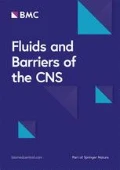Background
Ambulation is the specific skill of biped walking, supported by braces and walking aids in patients with spina bifida. [according to: Shurtleff D. (Editor) Myelodysplasias and Extrophies (1986)]. In the last years our therapeutic goal was to enforce ambulation as early and as long as possible in these patients. In the study presented we wanted to look at the results in the children and adolescents of the outpatient clinic for spina bifida of the Cologne Children's Hospital.
Materials and methods
We collected clinical data and information about ambulation of 90 spina bifida patients (47% female, 53% male, age 1.4 to 27 years) using a questionnaire. Patients were grouped by their walking distances according to Hoffer [Hoffer MM et al; J Bone Joint Surg Am 55: 137 (1973)]. Statistical analysis was performed using SPSS™
Results
See Table 1. Walking distance improved in 39%, worsened in 24% and stayed equal in 37% of the patients.
Conclusion
A multidisciplinary care in a specialised institution can achieve a high level of ambulation in spina bifida patients and maintain this skill over a long period of time in a majority of patients. Data will be used for pre- and postnatal counseling of parents.
Author information
Authors and Affiliations
Corresponding author
Rights and permissions
Open Access This article is published under license to BioMed Central Ltd. This is an Open Access article is distributed under the terms of the Creative Commons Attribution 2.0 International License (https://creativecommons.org/licenses/by/2.0), which permits unrestricted use, distribution, and reproduction in any medium, provided the original work is properly cited.
About this article
Cite this article
Pauly, M., Cremer, R. Ambulation in children and adolescents with spina bifida. Fluids Barriers CNS 6 (Suppl 1), S53 (2009). https://doi.org/10.1186/1743-8454-6-S1-S53
Published:
DOI: https://doi.org/10.1186/1743-8454-6-S1-S53

